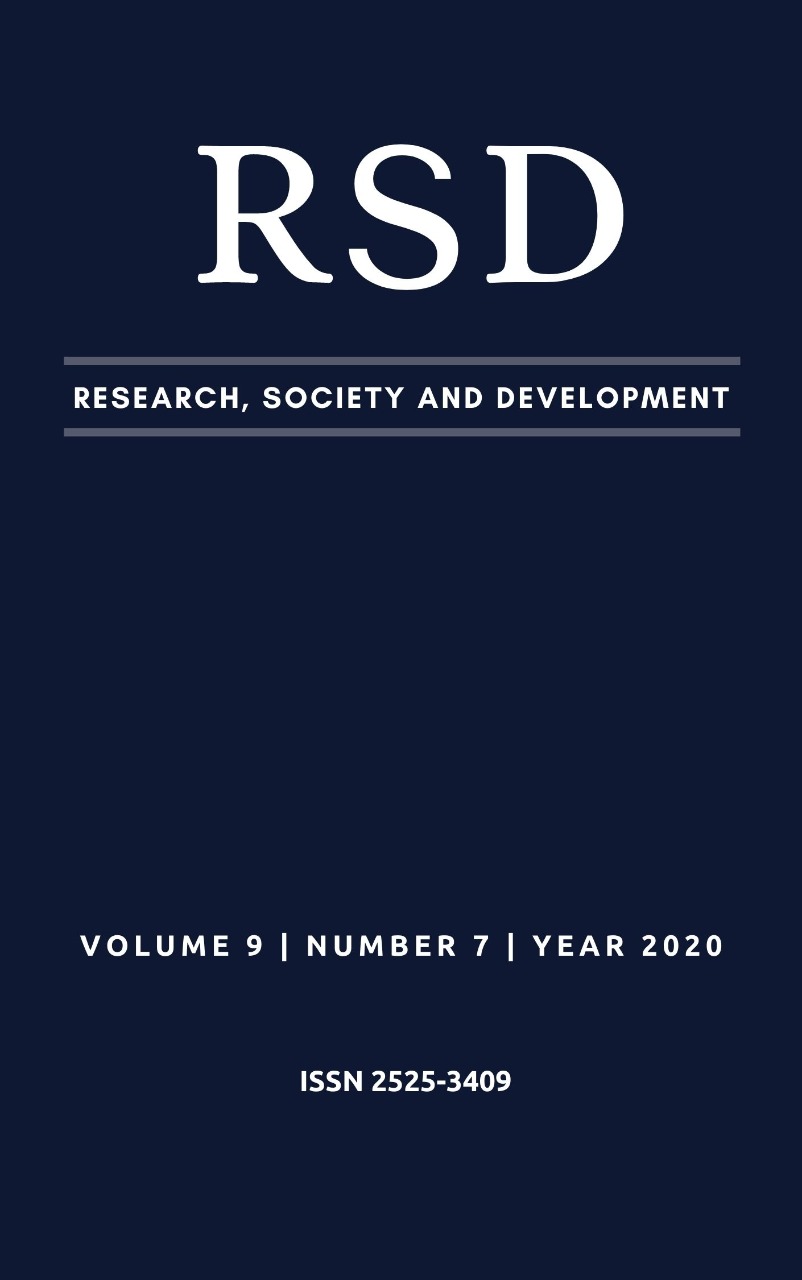3D little hands extension project - Extension experience and its contribution to health education
DOI:
https://doi.org/10.33448/rsd-v9i7.4088Keywords:
Health education; Artificial Limbs; Amputation.Abstract
Introduction: Assistive technology are devices, resources and processes that promote a significant improvement in the quality of life of people with disabilities. Due to the high values of prostheses and orthoses, additive manufacturing appears, which promotes prosthetic parts that fulfill their functions; promote functionality, and also facilitating access to these parts, since they are cheaper. Objective: to demonstrate through an experience report, the experiences carried out by a group of academics in the creation of low-cost orthotic devices, with the use of 3D technology within an extension project. Methodology: The present research is characterized as a descriptive research with characteristics of experience report. Results and discussions: the experiences that this project provided were important in the process of academic and professional training of extension workers, since there was contact in the production and construction of prosthetic parts, application of protocols, learning in specialized evaluation and knowledge about the 3D printer. Conclusion: The experiences of the 3D little hands project contributed significantly to successful experiences, which may open new ideas and new projects to help other people who need a foundation in the creation of similar projects in other regions.
References
Aguiar, Leonardo De Conti Dias & Yonezawa, Wilson Massashiro. (2014). Construção De Instrumentos Didáticos Com Impressoras 3D. IV simpósio Nacional de Ensino de Ciência e tecnologia, 4(1):1–12, 2014. Disponível em: <http://sinect.com.br/anais2014/anais2014/artigos/tic-no-ensino-aprendizagem-de-ciencias-e-tecnologia/01409583389.pdf>.
Arizi, Isabela Victória Fontes; Sales, Weslley Barbosa & Tomaz, Renata Ramos. (2020) Avaliação da destreza, coordenação motora e impacto na qualidade de vida em paciente utilizando tecnologia assistiva: um estudo de caso. Research, Society and Development, 9 (6): 1–17, 2020. Disponível em: <https://rsd.unifei.edu.br/index.php/rsd/article/view/3470/2688>.
Bersch, Rita. (2017). Introdução à tecnológia assistiva. Porto Alegre: [s.n.], 2017. Disponível em: <https://www.assistiva.com.br/Introducao_Tecnologia_Assistiva.pdf>.
Biffi, Rubiani Ferracin et al. (2018). Levantamento dos problemas do dia a dia de um grupo de amputados e dos dispositivos de auxílio que utilizam. Revista de Terapia Ocupacional da Universidade de São Paulo, 28(1):46–53.
Brasil, (2014). Ministério da Saúde. Técnico em órteses e próteses : diretrizes e orientação para a formação. Ministério ed. Brasília: Ministério da Saúde, 2014. Disponível em: <https://bvsms.saude.gov.br/bvs/publicacoes/tecnico_orteses_proteses_diretrizes_orientacao_formacao.pdf>.
Brasil (2013). Ministério da Saúde, Brasil. Departamento de Ações Programáticas Estratégicas. Diretrizes de atenção à pessoa amputada. 1. ed. Brasília: Ministério da Saúde, 2013. Disponível em: <https://bvsms.saude.gov.br/bvs/publicacoes/diretrizes_atencao_pessoa_amputada.pdf>.
Canciglieri, Osiris; Selhorst, Aguilar & Sant'Anna, Ângelo Márcio Oliveira. (2015). Método de decisão dos processos de prototipagem rápida na concepção de novos produtos. Gestao e Producao, 22(2):345–355.
Duarte, João Paulo Amaral. (2017). Universidade federal de uberlândia joão paulo amaral duarte desenvolvimento de uma plataforma de impressora 3d acoplada a um scanneR 3D. 2017. 1–72 f. Universidade federal de uberlândia joão.
Júnior, Jorge Lopes Rodrigues; Cruz, Larissa Maria de Souza & Sarmanho, Ana Paula Santos. (2018) Impressora 3D no desenvolvimento de pesquisas com próteses. Rev. Interinst. Bras. Ter. Ocup, 2(2):398–413, 2018. Disponível em: <https://revistas.ufrj.br/index.php/ribto/article/viewFile/15022/pdf>.
Lacerda, Dailton alencar lucas de; Ribeiro, Kátia Suely Queiroz Silva & Fleischer, Soraya.(2015) Em Marte : fisioterapeutas fora dos serviços de saúde. Revista de Saúde Coletiva, 25(4):1383–1386, 2015. Disponível em: 10.1590/S0103-73312015000400017>.
Lopes, Rodrigues Júnior, Jorge; Maria de Souza Cruz, Larissa; Paula Santos & Sarmanho, Ana.(2018). Impressora 3D no desenvolvimento de pesquisas com próteses. Rev. Interinst. Bras. Ter. Ocup. Rio de Janeiro. 2018. 2(2):398–413, 2018. Disponível em: <https://revistas.ufrj.br/index.php/ribto/article/viewFile/15022/pdf>.
Pereira, Adriana Soares; Shitsuka, Dorlivete Moreira, Parreira, Fabio José; & Shitsuka, Ricardo. (2018) Metodologia da Pesquisa Científica - Licenciatura em Computação. [S.l: s.n.]. Disponível em: <https://repositorio.ufsm.br/bitstream/handle/1/15824/Lic_Computacao_Metodologia-Pesquisa-Cientifica.pdf?sequence=1. Acesso em: 28 março 2020.>.
Printing, XYZ. da Vinci 1.0 Pro. Disponível em: <https://www.xyzprinting.com/pt-PT/product/da-vinci-pro>.
Ribeiro, William Candido; Miyadaira, Alberto Noboru & Ferruzzi, Yuri. (2016). Desenvolvimento de mão robótica de baixo custo. Revista Eletrônica Científica Inovação e Tecnologia, 1(13): 93–99.
Saupe, Rosita et al. (2005). Competência dos profissionais da saúde para o trabalho interdisciplinar. saúde e educação, 9(18):521–536.
Volpato, Neri. (2017). Manufatura aditiva: tecnologias e aplicações da impressão 3D. 1. ed. [S.l: s.n.], .
Downloads
Published
How to Cite
Issue
Section
License
Authors who publish with this journal agree to the following terms:
1) Authors retain copyright and grant the journal right of first publication with the work simultaneously licensed under a Creative Commons Attribution License that allows others to share the work with an acknowledgement of the work's authorship and initial publication in this journal.
2) Authors are able to enter into separate, additional contractual arrangements for the non-exclusive distribution of the journal's published version of the work (e.g., post it to an institutional repository or publish it in a book), with an acknowledgement of its initial publication in this journal.
3) Authors are permitted and encouraged to post their work online (e.g., in institutional repositories or on their website) prior to and during the submission process, as it can lead to productive exchanges, as well as earlier and greater citation of published work.

